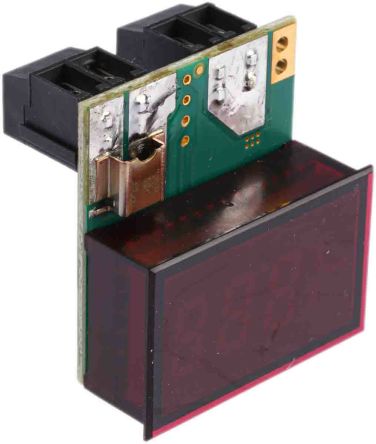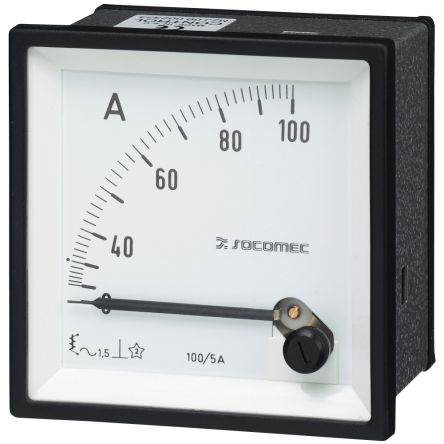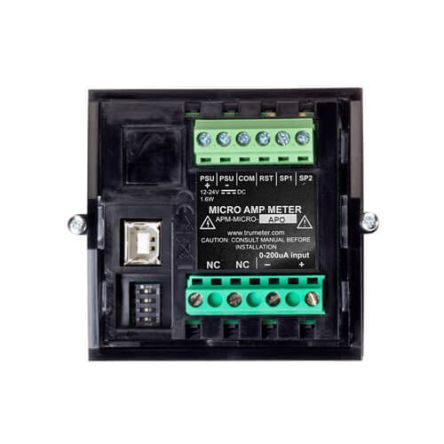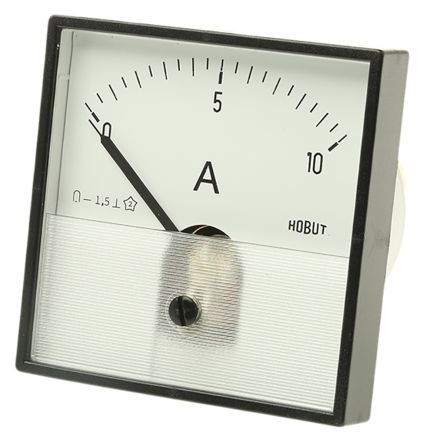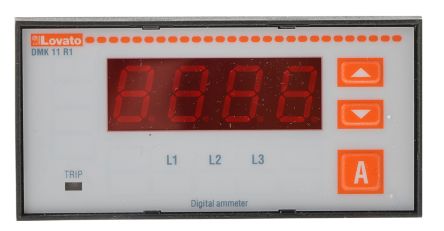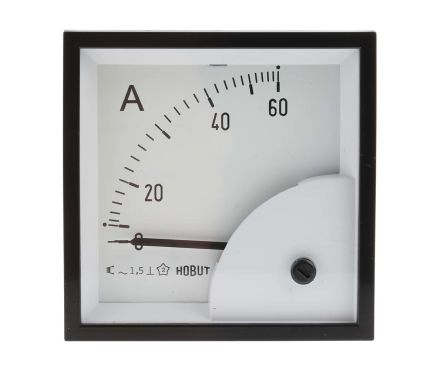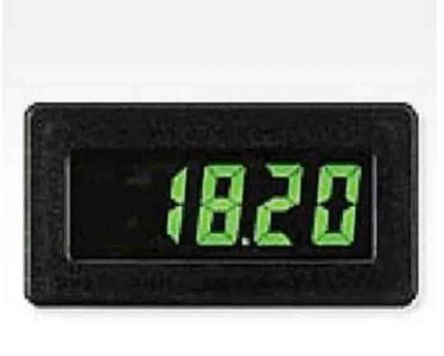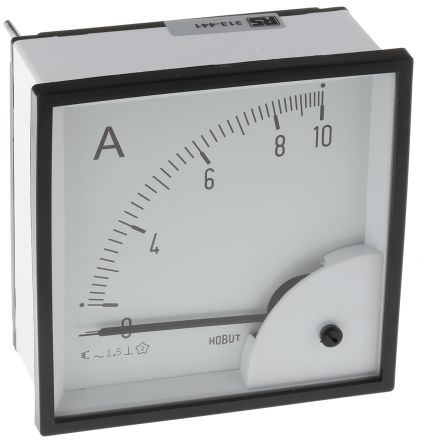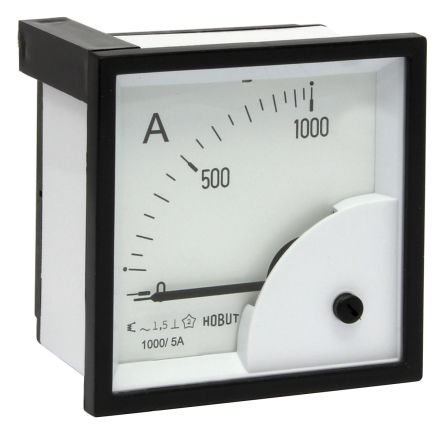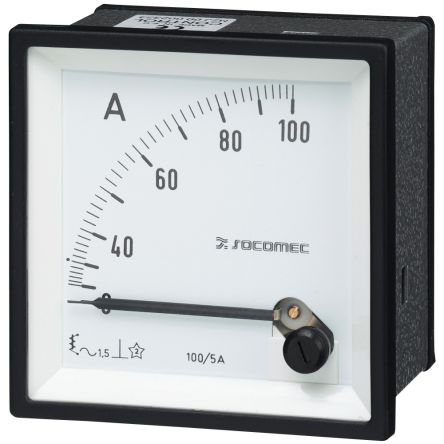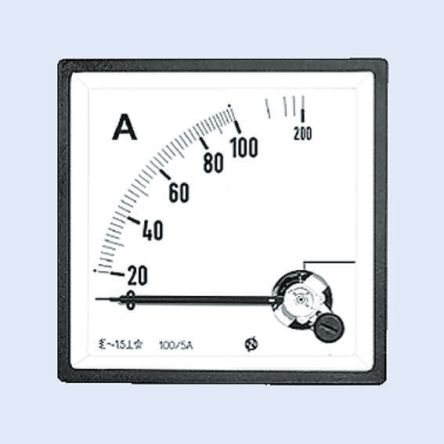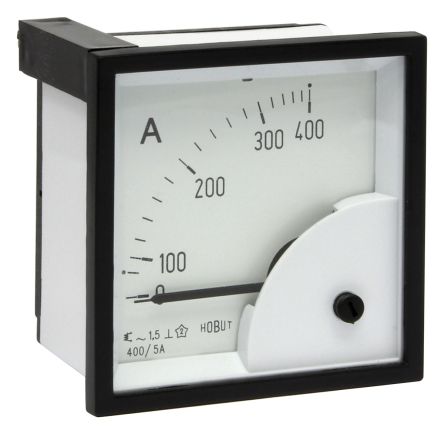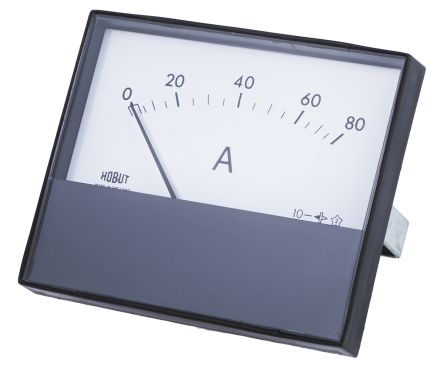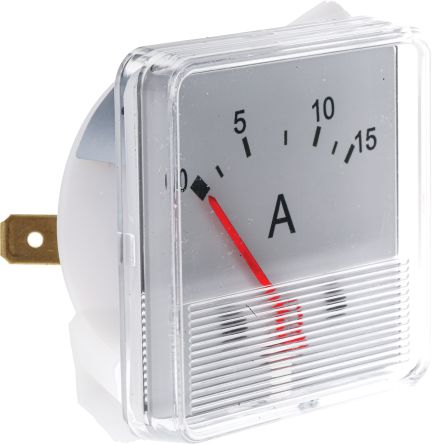- Automation & Control Gear
- Cables & Wires
- Enclosures & Server Racks
- Fuses & Circuit Breakers
- HVAC, Fans & Thermal Management
- Lighting
- Relays & Signal Conditioning
- Switches
- Batteries & Chargers
- Connectors
- Displays & Optoelectronics
- ESD Control, Cleanroom & PCB Prototyping
- Passive Components
- Power Supplies & Transformers
- Raspberry Pi, Arduino, ROCK, STEM Education & Development Tools
- Semiconductors
Ammeters
Ammeters are named after ampere meters and amperes (also known as amps in the electrical industry). These devices provide an accurate way of measuring and displaying current within a circuit, which helps with detecting problems such as unusually high or low levels of current.
The ampere level of the current is displayed on the ammeter using either an analogue scale or a digital readout. The current is presented in a draw (how much current flows) or continuity (how uninterruptable the current is).
What is a Digital Ammeter?
Digital ammeters display their readings using a digital display. They are ideal for use in facilities with poor lighting, which makes them useful in factories and industries. In some models, these ammeters can display alerts when certain conditions are met, such as when the current reaches a certain value.
In digital ammeters, the bar graph scale can also be programmed to include both minimum and maximum values, enabling a custom scale depending on the needs of the application. The digital meter can also be set to trip when values exceed, fall behind, are between or are outside set points.
What is an Analogue Ammeter?
Using a dial and pointer, an analogue ammeter measures current. It is possible to find different types of moving ammeters, such as moving iron ammeters, moving coil ammeters, or moving magnet ammeters. Moving iron ammeters are commonly used in most applications since they are capable of measuring both direct currents (DC) and alternating currents (AC).
Types of Ampere Meters
There are 3 types of analogue panel ammeters available on the market today:
Moving Coil
This type of panel mount amp meter works by magnetic deflection, in which a coil moves in a magnetic field when current passes through it. These are commonly used in precision instruments where low current sensitivity is required, such as in laboratory equipment and calibration devices. A modern version of this device was first invented by Edward Weston with two spiral springs providing the restoring force.
Moving Magnet
A moving magnet ammeter works in a similar manner to a moving coil ammeter, with the exception that the coil is placed inside the meter case, while the needle is moved by a permanent magnet.
Compared to moving coil instruments, moving magnet ammeters can carry more current, typically several tens of amps, since their coil can carry thicker wire, so there is no hairspring to carry the current. Interestingly, some of these ammeters contain zero hairsprings, and the restoring force is provided by a permanent magnet instead. These are ideal for automotive and heavy machinery applications where robustness and high current capacity are essential.
Moving Iron
Moving iron ammeters rely on iron, which moves under the influence of electromagnetic force produced by wire coils. Unlike the moving-coil ammeter, this meter works on both direct and alternating currents. Suitable for industrial applications, these ammeters are favoured in power distribution and control systems where varying current types are common.
Choosing the Right Ammeter
When buying an ammeter, it's essential to consider factors such as current range, accuracy, and the specific environment in which it will be used. The current range should match the maximum expected load to prevent device overload.
Similarly, the accuracy of the ammeter should be sufficient for the application to ensure reliable readings, which is crucial in applications where precise measurements can impact safety and operational efficiency.
Additionally, the specific environment in which the ammeter will be used is essential to consider; for instance, devices used in harsh or outdoor environments should have appropriate protective ratings such as (Ingress Protection) IP to withstand elements like dust, moisture, and extreme temperatures.
Industry Applications
Amp meters play a critical role in monitoring and managing electrical systems across various industries:
- Discrete Manufacturing: In discrete manufacturing, ammeters are essential for monitoring electrical loads on machinery and ensuring equipment operates within safe electrical parameters. This helps prevent overload, enhance efficiency, and reduce downtime.
- Process Manufacturing: Panel mount amp meters ensure that all process control equipment operates within the correct electrical specifications, which is crucial for maintaining product quality and safety.
- Energy and Utilities: For energy providers, ammeters are key to monitoring the flow of electricity through circuits, helping to manage load and detect issues before they lead to failures.
- Facilities and Intralogistics: In facilities management, ammeters help oversee building power systems, ensuring efficient operation and helping to diagnose electrical problems in their early stages.
Your Trusted Ammeter Distributor & Manufacturer
RS is a globally recognised and trusted supplier, distributor, and manufacturer of amp meters. We carry reputable brands such as Socomec, Sifam Tinsley, and HOBUT alongside our own RS Pro line, ensuring quality and reliability across our extensive range.
We also offer a diverse selection of other process control gear and equipment, such as pulse counters and temperature controllers. If you're looking to buy an ammeter or find an ammeter for sale at competitive prices, look no further than RS Pro. Our online selection of ammeters is designed to meet your specific measurement needs. For more information on our delivery services and fees, please visit our Delivery Page.
Popular Searches
Related links
- RS PRO Analogue Panel Ammeter 0/30A For Shunt 75mV DC 1 % Moving Coil
- Trumeter APM-AMP Digital Ammeter AC 68mm x 68mm, 1 %
- A Complete Guide to Ammeters
- Clamp Meters
- Voltmeters
- Multi Function Panel Meters
- RS PRO Analogue Panel Ammeter 1 (Input)A DC ±1.5 % Moving Coil
- Trumeter APM Analogue Panel Ammeter DC, 68mm x 68mm
